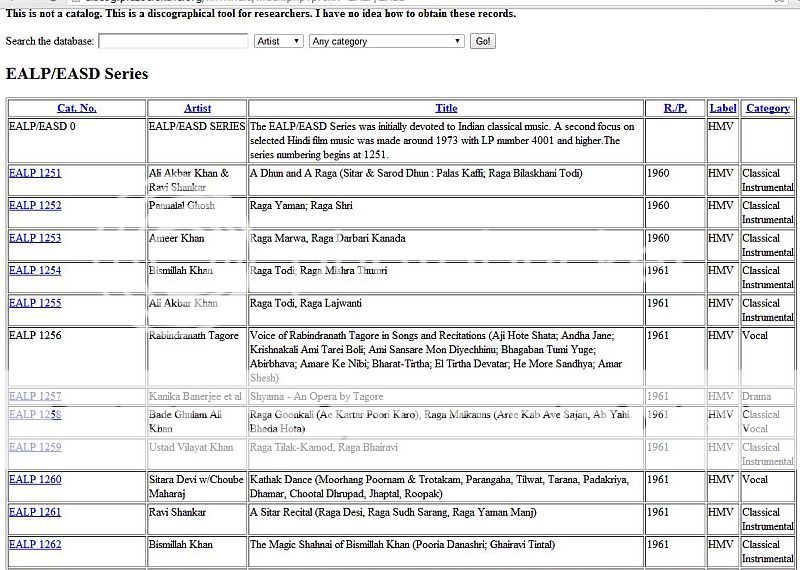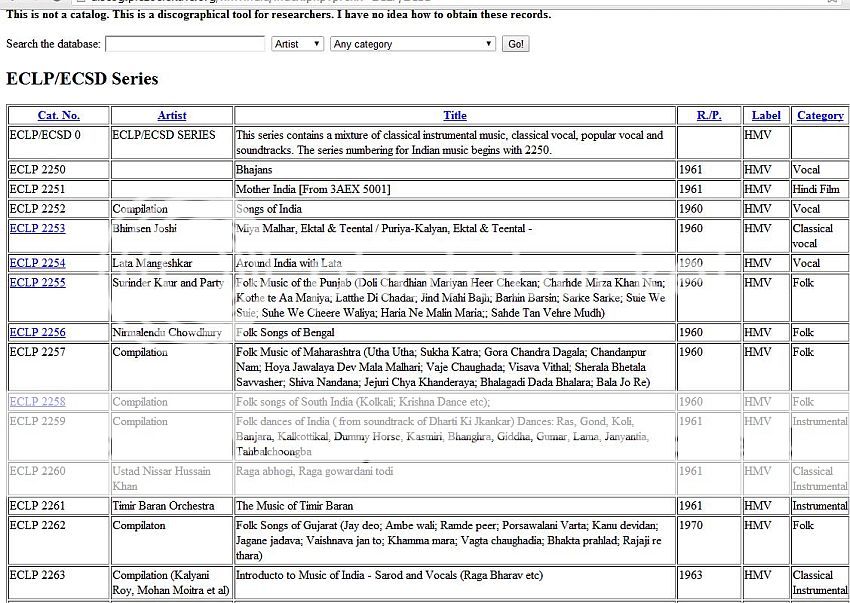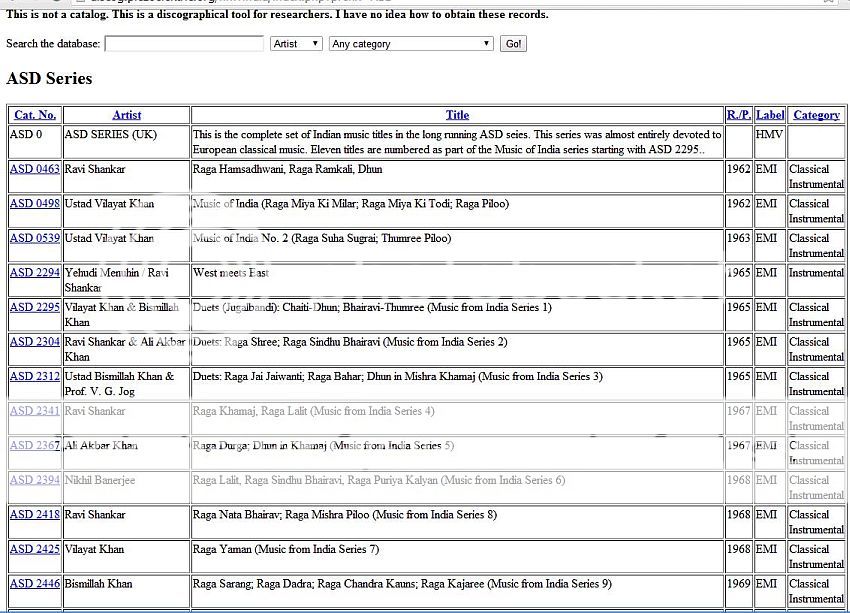Hi musiklava
Don't go with the EALP series. They were introduced post 1973. The original series is ASD. I am not sure if all of them were original HMV recordings. For example Improviastions by Ravi Shankar is to the best of my knowledge is not an original Indian release. It was first released by World Pacific in USA. Later licensed to HMV. I am not very sure of this. Someone else can confirm this.
I still think the first Indian stereo recorded and released on HMV was in 1965. Titles previous to that of Ravi Shankar and Vilayat Khan were in all probability released first by a foreign label and then later released on the EALP series in India post 1973. So while these may be in stereo its not actually Indias first stereo lp
You are right Prem regarding this album. While the Indian version is a MONO one, the US counterpart on Liberty label is a Stereo.
The idea of raising this topic is purely academic indeed. As unlike West we don't have much of documented record regarding evolution of our recording/pressing system. Through this discussion I'm trying to extract some sort of idea when and how things happened.
AFAIK, HMV/GCOI did not have any stereo pressing plant till early 1966. While Bhaskar Menon was CEO of GCOI, Dum Dum, this plant was imported from EMI Australia and was installed late 1966. I request other FM's to kindly add/correct any info they have regarding this. The seniors are more likely to have some interesting facts from those era.
Regards
Last night I found a most interesting website thats maintained by a group of people who have created a comprehensive database of Records released by the GCOI (HMV). The website lists a number of series of the albums released by the GCOI in all its avatars and is open to any person or researcher who can use the database as a Record discography tool.
Of these the EALP/EASD series alone runs into nearly 30 pages of print-out.
This is what is mentioned at the beginning of the series
The EALP/EASD Series was initially devoted to Indian classical music. A second focus on selected Hindi film music was made around 1973 with LP number 4001 and higher.The series numbering begins at 1251.
The EALP series begins at EALP 1251 with an LP of Ali Akbar Khan and Ravi Shankar, which was released in 1960. The series EASD does not appear until 1965 and begins with No.EASD 1296 (Stereo recording), which I had mentioned in an earlier post. Only two Stereo LPs were released in 1965, the other being No.EASD 1299 and this was also mentioned in my post. Youll notice that all the numerals run serially regardless of the year of release. So, you are quite right in singling out 1965 for the first Indian stereo LP to be released and Im pretty sure now that its EASD 1296.
I have checked out the other big series which is ECLP/ECSD, which is described as
This series contains a mixture of classical instrumental music, classical vocal, popular vocal and soundtracks. The series numbering for Indian music begins with 2250. No.ECLP 2250 is a LP of Bhajans and was released in 1961. The letters LP denote Mono in this series and SD denotes stereo. The first stereo release is No.ECSD 2338 featuring Lalgudi Jayaraman and was released in 1967.
Interestingly, I found that one of the LPs bore another series S/MOAE 132 (1965) under the
Odeon label corresponding to EASD 1296 and this is what was written in the database description
The MOAE Series was primarily an export edition for the EALP/EASD Series. Here the S/ denotes stereo.
So you can see why we cannot ignore either the EALP or EASD series..
EALP - Mono
EASD - Stereo
You are right about Ravi Shankars Improvisations (EALP 1288, 1964). It is a Mono release, as the series clearly indicates. It was released in the U.S. under the World Pacific label in 1962 as a stereo LP (ST 1416) and under the Liberty label in U.K. (LBS 83076) in 1968, also as a stereo LP.
Ive seen the quality of pressing and the finish of the earlier EASD series LPs and they are really good. In my personal opinion, these could have been pressed outside India with Indian labels. Obviously the output numbers and simultaneous releases abroad do not justify their manufacture in more than one Country.
Finding out
where the recordings were done is going to be a different ball game altogether!






